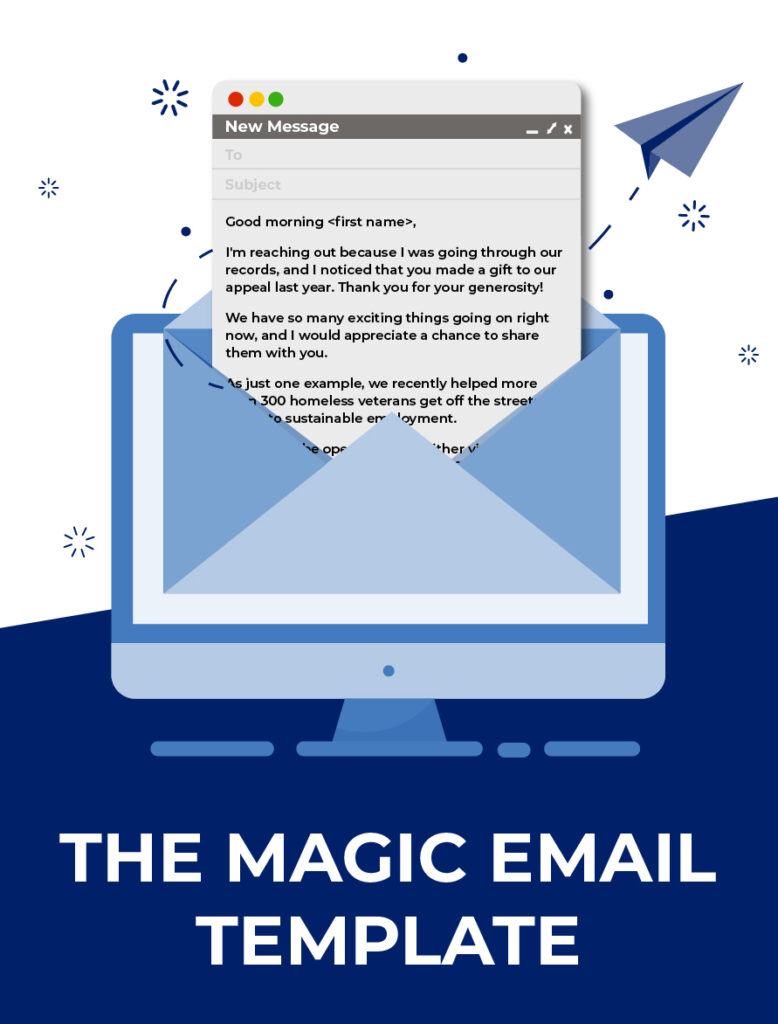As a fundraiser, you might be all too familiar with lapsed donors—LYBUNTS and SYBUNTS. It can be frustrating to see a historically consistent donor suddenly drop off or have a donor make one significant gift only to never hear from him or her again. We know that there could be any number of reasons for this, however, it’s up to you to determine how to re engage lapsed donors and welcome them back..
First, before you work on rekindling that fire that first interested them in your nonprofit, let’s talk about what it means to be a lapsed donor and the different kinds of lapsed donors.
What does LYBUNT mean?
A donor who gave Last Year But Unfortunately Not This year. In other words, a donor gave to you last year, but has yet to make a gift in the current year. “Year” can be defined as the fiscal year or calendar year.
When looking at LYBUNT donor segments, it is important to pull your donor database correctly.
When looking at a report of LYBUNT donors, note the timing of their past gift(s). For example, someone who has given in the fourth quarter over the last three years may show up as a lybunt donor if you pull the report in June but isn’t truly at risk of becoming a lapsed donor.
What does SYBUNT mean?
A donor who gave Some Year But Unfortunately Not This year. This is a donor who gave some year in the past (maybe two or three years ago) but has yet to make a gift in the current year. Again, “year” can be defined as fiscal year or calendar year.
Likewise, looking at SYBUNT donor segments, it is important to pull as much data as possible.
Be mindful of giving history when pulling a report of SYBUNT donors. A lapsed donor who gave two years ago is very different than a donor who hasn’t given to your annual appeal in nine years, for example.
LYBUNTS and SYBUNTS Fundraising Appeal Strategies
Before you write off LYBUNTS and SYBUNTS donors and remove them from your appeal strategy forever, take a closer look – can you win back lapse donors with a LYBUNT strategy or greater focus on SYBUNTS?
Focus on LYBUNT and SYBUNT donors who meet specific parameters, so you aren’t wasting valuable resources chasing folks unlikely to renew their gift. For example, consider pulling a report of lapsed donors who have given at least three gifts in the past three to five years over a certain dollar amount. Create a LYBUNT report and SYBUNT report to find donors who made a significant, high-level gift in the last three to five years. These donors are more likely to remember you and your mission than someone outside these parameters.
Once you determine the audience you are focusing on, the most important thing you can do is talk to them! If you want to bring back a high-level donor, the first time they hear from you in three years should not be an annual appeal letter. Based on the audience you identified, determine the appropriate outreach strategy and create a unique SYBUNT letter or LYBUNT appeal letter. Consider these efforts:
- share your newsletter
- email a video showcasing your mission in action
- a personalized letter that shares the impact the donor could have on their community
- a phone call to catch up and tell them the newest thing going on at your nonprofit
Whichever you choose, increasing donor communication will increase your fundraising effectiveness.
Once you have communicated with them at least once – though preferably a few times, through a few different channels – include them in your fundraising appeal. In their annual appeal letter, acknowledge their past generosity and support. Be specific about the impact that gifts have on your mission.
Share your plans and goals and inspire them to renew their last gift, or even increase their gift to make up for previous years, depending on what strategy you decide on. Don’t forget a clear call-to-action, making it as easy as possible to support your nonprofit.
Using terms like “LYBUNT letter” and “SYBUNT campaign” might impress your boss, but if you want to really impress them, come in with a strategy to convert LYBUNT and SYBUNT donors into recurring donors through your annual appeal. Be intentional about who your audience is and strategies that will help inspire giving. Keep in mind that while you won’t recapture everyone, each renewed gift from a lapsed donor is worth celebrating.
Interested in pledge cards? We’ve created the Ultimate Guide to Pledge Cards.
















